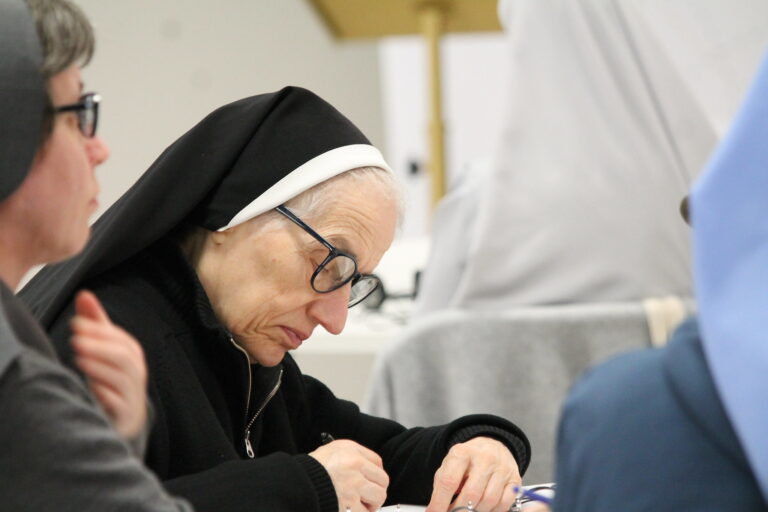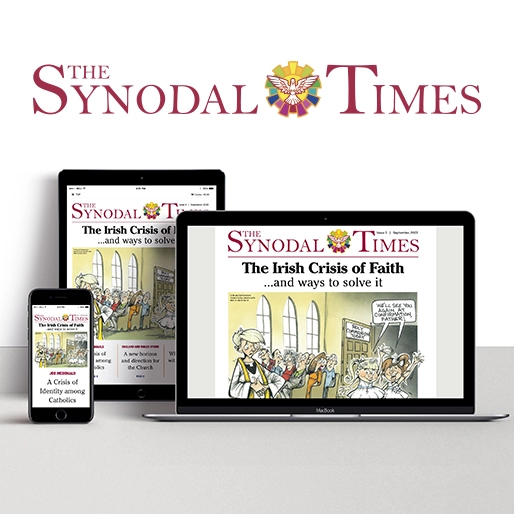Between 27 November and 4 December, the First International Meeting on Communication for Religious Life ‘Communicating Religious Life: Towards the Future’ was held at the headquarters of the International Union of Superiors General (Uisg) in Rome.
It was a very dense and intense week dedicated to Communication in Religious Life, with participation of about 500 communicators, with more than 10 training workshops, conferences reserved for communicators, round tables with the objectives of: training, networking and change.
Communication in and of religious life is becoming more and more important if the congregations want to keep being present and help lead the new generations and the congregations into the future. The scope of the meeting was raising awareness about the digital nature of the paradigm of nowadays life, both in society and in the Church: “such awareness – reads the final document – doesn’t just strengthen and focus on our communication on social media, but rather on all dimensions of our life”.
The sisters, considering communication as one of the missions of religious life, “one that we are encouraged to by the Holy Spirit, who guides us to proclaim the Gospel in the Church”, want to enter a new phase of communication and the week of reflection was a great boost in that direction.
To better enter this new dimension in which the Uisg is trying to position itself with increasing conviction, The Synodal Times turned to Patrizia Morgante Coordinator of the Uisg project ‘Communicating Religious Life’, and former head of communication office of Uisg.
What needs did you feel at one point?
This reflection matured within the Uisg communication office that was established in 2015. We first wanted to find a platform for communication and then we started to organise basic communication courses for sisters in presence and online.
Within the congregations we soon realised the importance of the role of digital in the mission of evangelisation and of spreading of the charisma, but also for the very existence of the congregations themselves: many candidates approach religious orders through Google.
It is precisely because of this that more and more congregations have begun to think that some sisters should dedicate themselves only to this aspect, and there has been a great increase in the number of sisters in the world who have specialised. We also found the need for communicators to come together, to take steps forward together.
There are researches and reflections on communication in the Church but absolutely nothing for the communication of religious life and even less for women’s religious life. Plus which, although there are fewer male religious, they have a lot of space, while it is more difficult for female religious, who are not yet used to writing and communicating themselves, it was like if we heard a call: learn!
You are the voice of yourselves. Did the Pope’s reinforcement of the sphere of communication, with the establishment of an ad hoc dicastery, which, by the way, is the largest dicastery of the Roman Curia, also contribute to this path?
Yes certainly. Together with the internal reflection within the Uisg, there was an advance in the recognition of the importance of the theme of communication precisely thanks to the establishment of the Dicastery for Communication.
Then the project Pentecost started from there, a project wanted by the dicastery precisely to offer space and voice to the sisters in the world through concrete tools (Pentecost had three main purposes: To point out stories that have sisters as witnesses of the ‘great works of God’ to be shared through the Vatican Media; to suggest sisters who could be selected as interns for a 3-month training programme at the Vatican Media in Rome and the opportunity to subscribe to L’Osservatore Romano free of charge for one year, ed.)
There was an impetus in the training of nuns but also the desire to speak out, to seek greater visibility, even the launch of the hashtag #siterstory. Then there was Covid which was a huge momentum to rediscover digital beauty.
It is a long and complex journey of awareness and change, what were and are the greatest challenges?
Uisg recently launched a survey entitled ‘sister communicate’ which involved 300 small congregations. The research revealed a great difficulty in recognising digital communication as a mission: it is the first obstacle due to the generational gap that makes it difficult to understand that the mission does not coincide only with the geographical province.
This generational difficulty is more evident in those who hold power, which is largely in the hands of ‘analogue’ nuns. This has generated and still generates major conflicts, a lack of dialogue, the feeling of wasting time on things that do not matter, and a disconnect with younger sisters, born in digital contexts that find it harder to understand certain ways of life.
This, of course, is not the same all over the world, in Africa the problem is also related to the problems of connection, in Asia there is a great variety of approaches, in the Philippines, for example, there is a good level of communication and connection, in India, on the other hand, there is a big gap between nuns who live in the city and those who reside in rural areas where it is not always easy to have access.
So there are basically two problems, the generation gap and the problems related to geographical or geopolitical areas.
In your reflections and discussions at the meeting at the end of November, beginning of December, a new figure emerged, that of the Digital Missionary, would you like to explain what it consists of?
It is not an idea of the UISG, it was born some time ago and stems from the conviction that in addition to physical geographic provinces, there is a need to consider a sixth continent, the digital one, and to think about appointing nuns to deal with it.
And so it will be necessary to train, ani[1]mate the digital literacy of the sisters and be present with one’s charisma to meet people where they are. Statistics tell us that people spend on average almost seven hours between social networks and the internet, so if you want to meet people you have to be there.
We have to abandon the old system of communication: I teach you and you listen to me, and learn new languages, use images. One influencer told us that she is primarily a graphic designer and she uses graphics to talk about the gospel.
A kind of female religious life 4.0 then?
Yes, because artificial intelligence cannot but enter into this discourse. There is therefore a need to educate to and through artificial intelligence, we can no longer deny it or pretend it does not exist. Clearly, some ethical aspects have to be kept in mind, which for a religious reality are obviously important, and it is therefore important to train ourselves in critical thinking that allows us to ‘use’ AI and not suffer it.
In a way, it is like taking an algorithmic path within ourselves to be personally aware of what you want. This is where we need to trigger a great deal of training that is not passive acceptance of AI. I repeat, using AI in an ethical manner educating at AI and educating it.
The meeting in late November and early December ‘Communicating Religious Life: Towards the Future’ was an opportunity to take stock of the process, how far have you come?
First of all, I would like to say that in the eight years since the Uisg communication office was set up, there has been a big improvement, which comforts us. During the week of meetings, critical issues emerged but also many good practices, a varied reality that changes according to many factors.
Among the critical points I would put that still among the decision-makers within the congregations, the importance of new forms of communication is not fully recognised. The people who deal with it, then, are not trained because the importance of training is still not recognised, it is still not understood that you have to be trained to do this activity. And then, not enough resources are allocated.
Then in the so-called Ratio Formationis, the candidates are not trained through this digital paradigm, but through old systems. One other challenge is knowing how to communicate with journalists and how to communicate outside one’s own Catholic or religious enclosure: there is still the difficulty, also because of the average age, which is generally quite high, to measure oneself with those who are not Catholic or who come from other cultures.
Among the strong points we can certainly highlight the greater awareness that emerged well in the final declaration with 12 points. We hope that in every congregation there will be people or groups of digital missionaries and, a decisive point, that they will be professionalised: we would never send an untrained person to be a nurse in a ward, the same will have to be the case for female communicators.
From what has emerged the United States and Latin America are a step ahead of the rest, Europe is advancing as is Asia but with some exceptions also because of geopolitical complexity, Africa must be supported. There are small communication networks, groups coming together even beyond confines and congregations.
Luca Attanasio is a journalist based in Rome.



